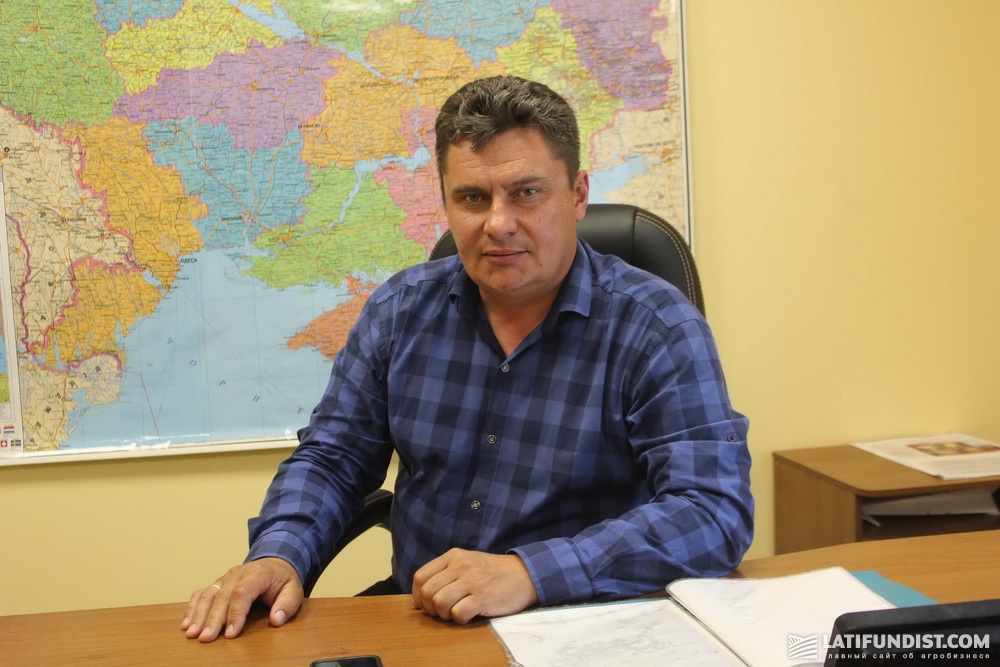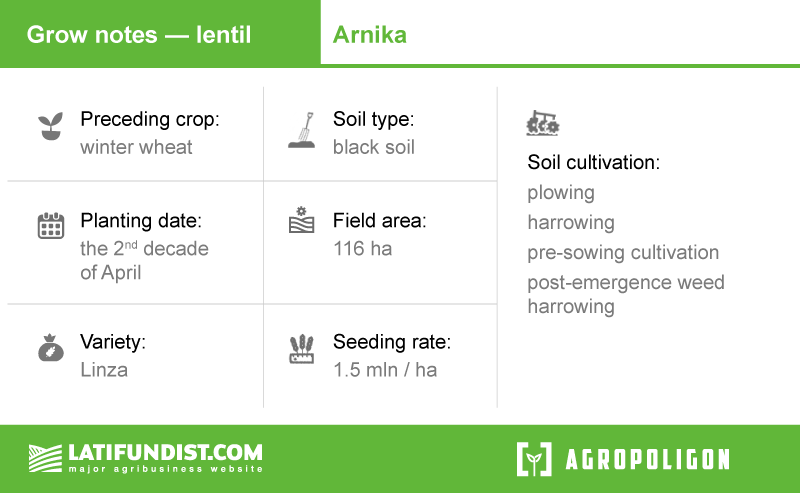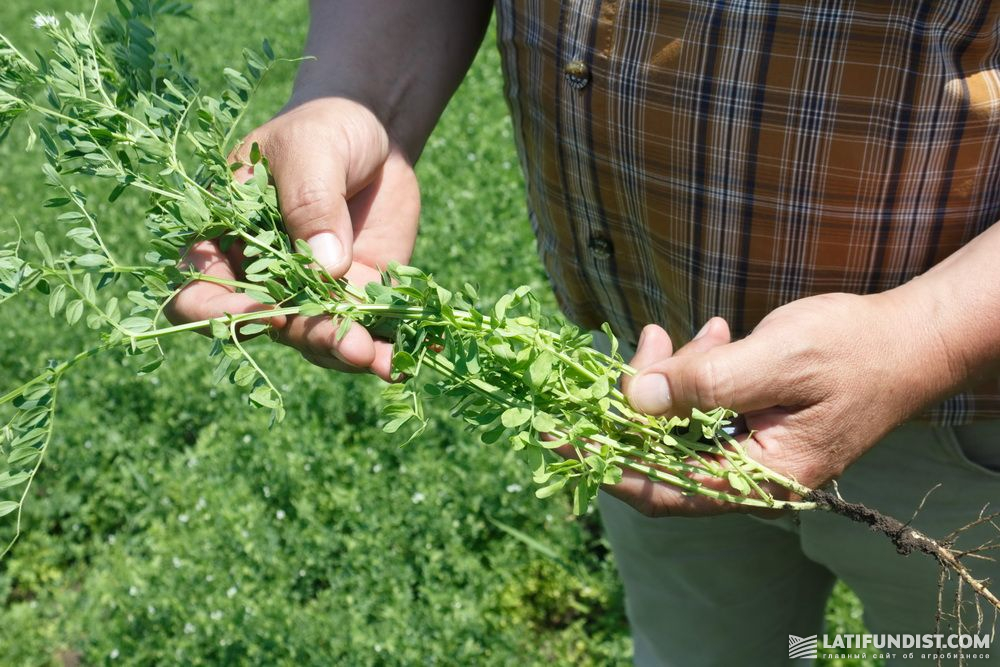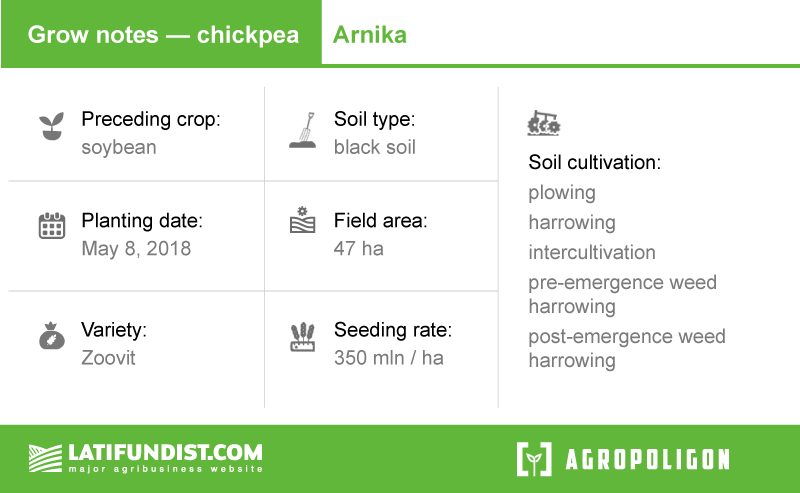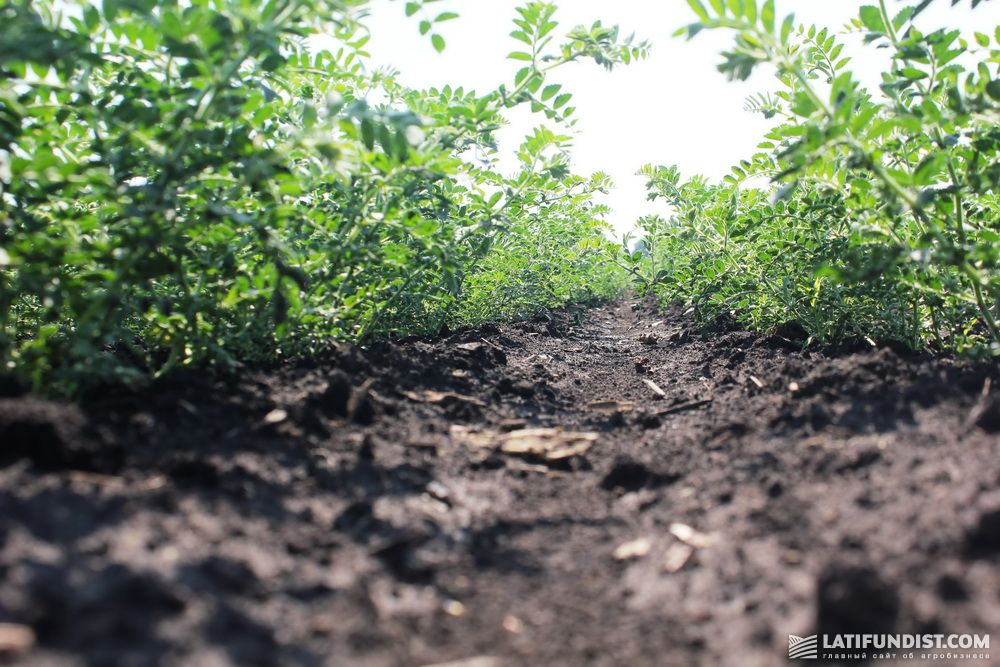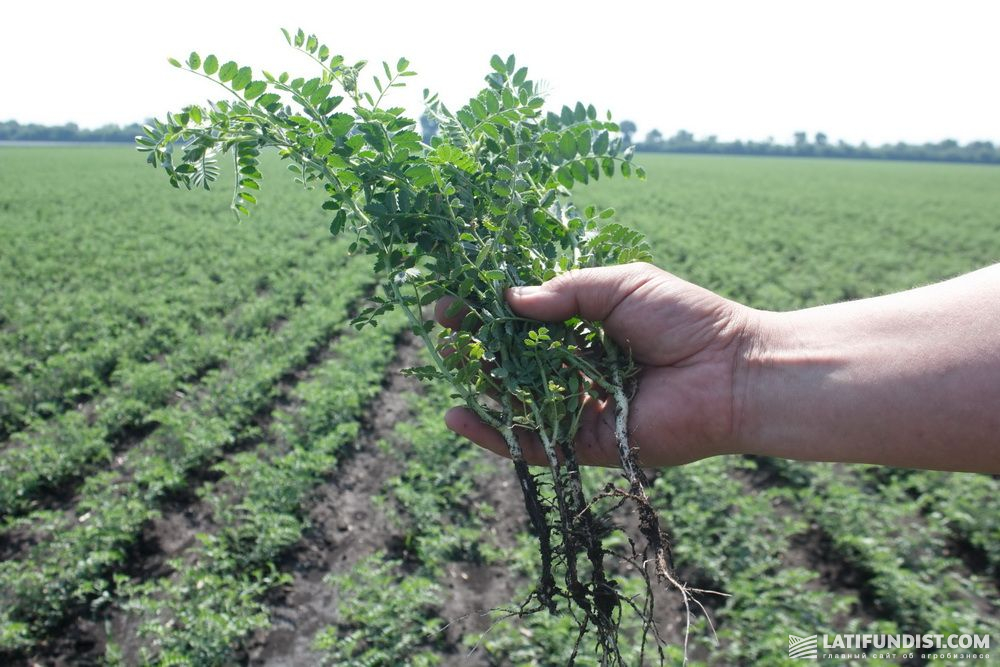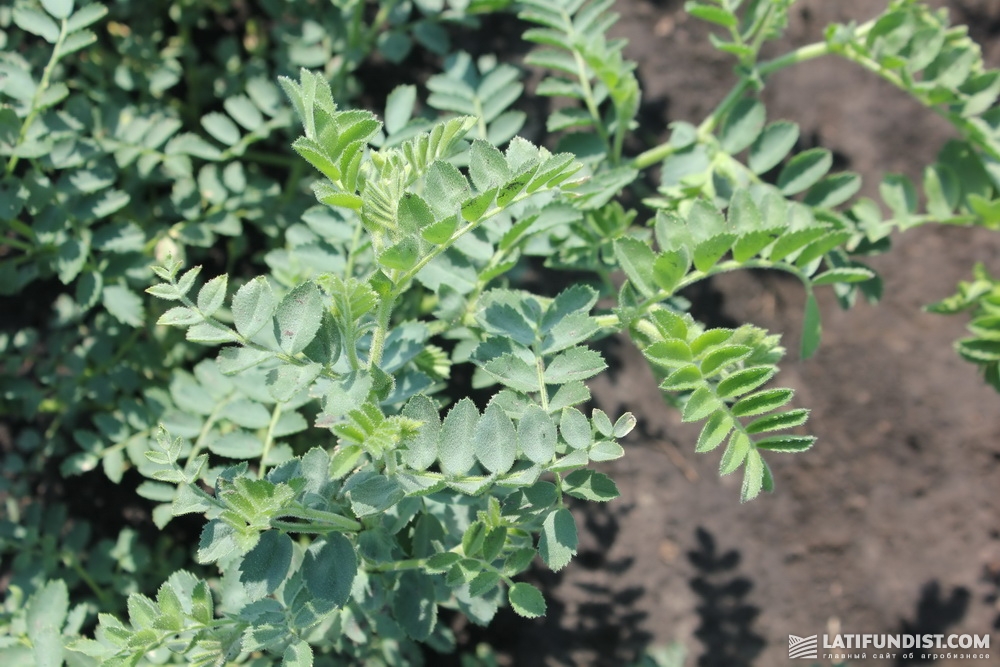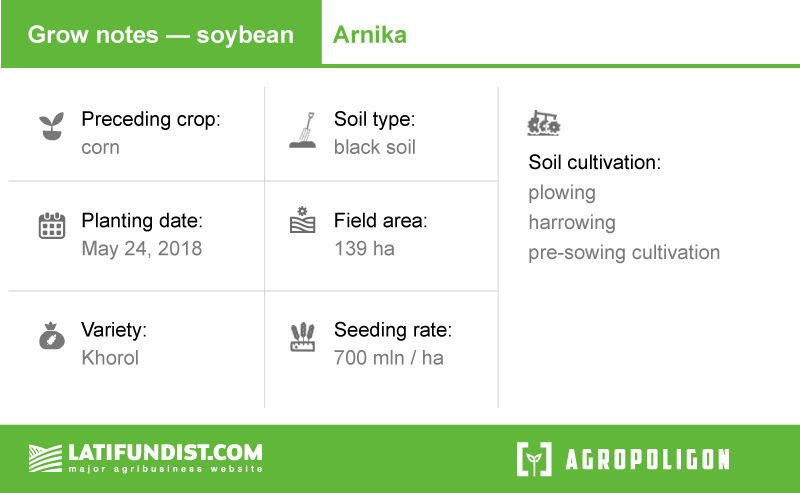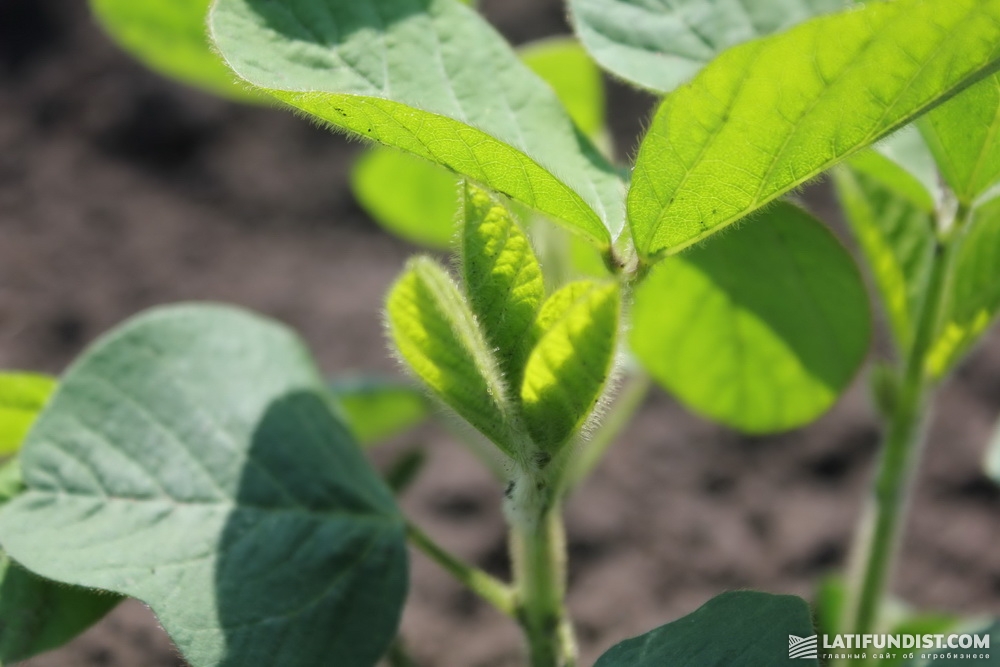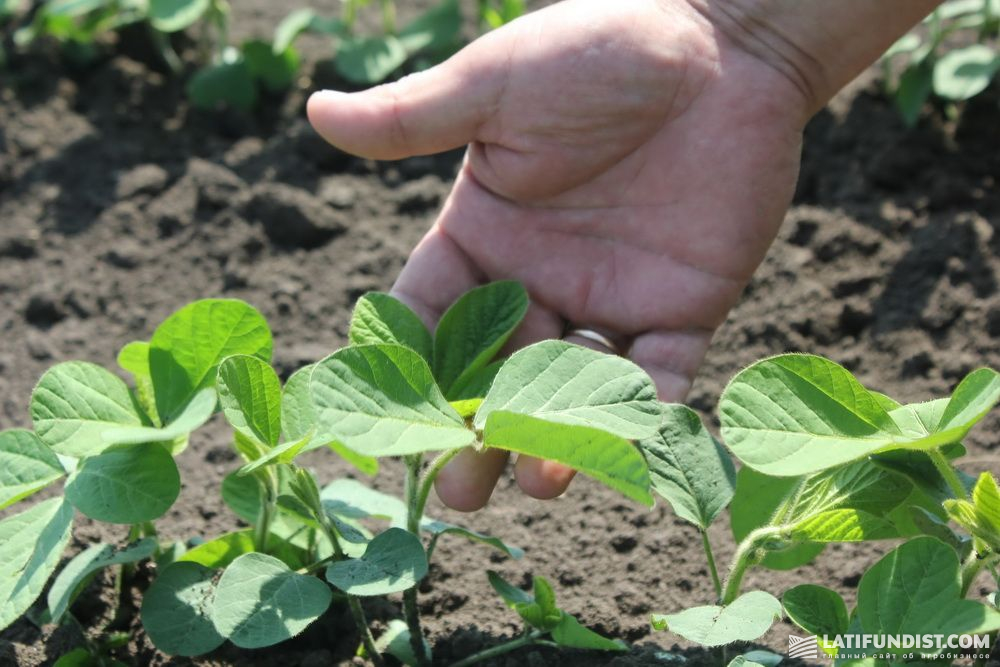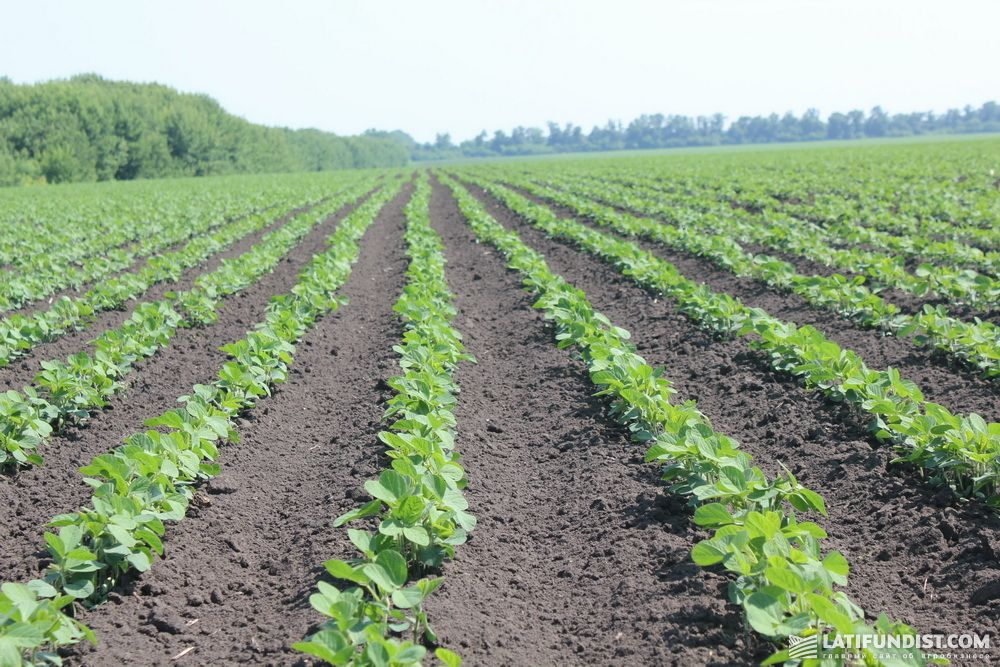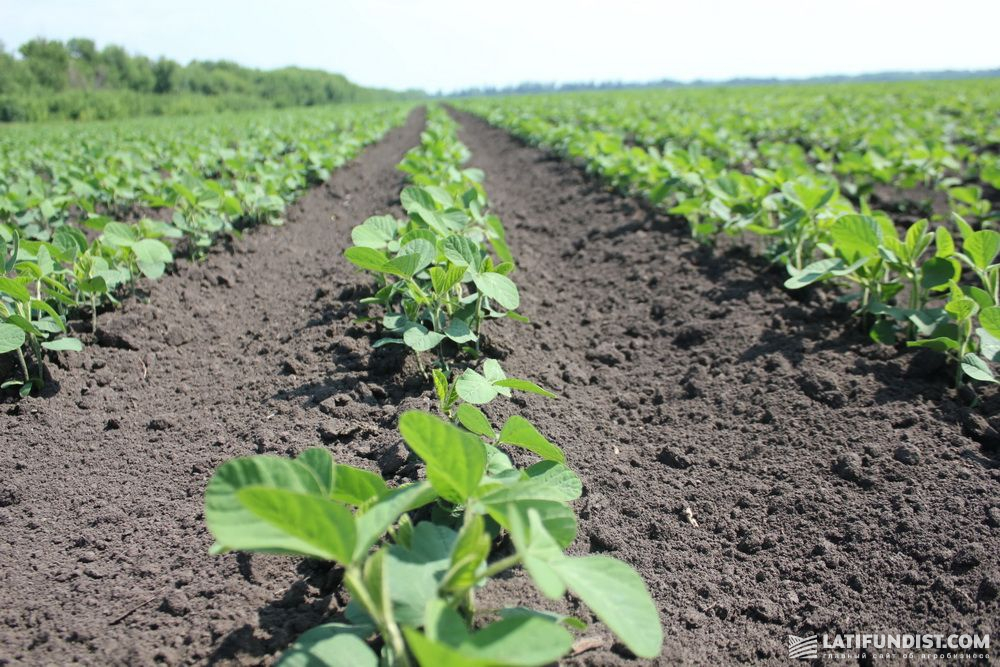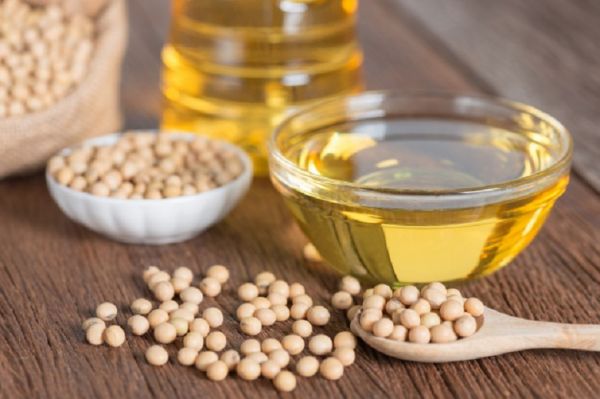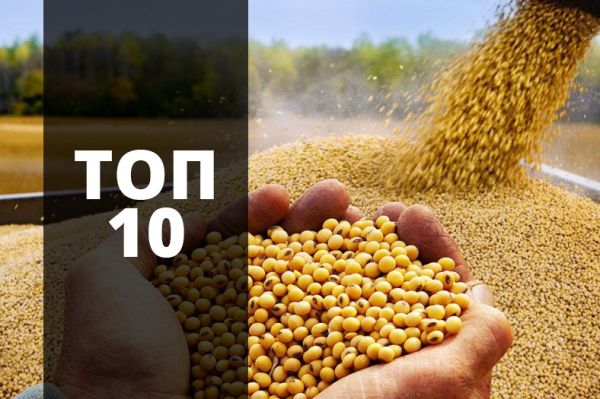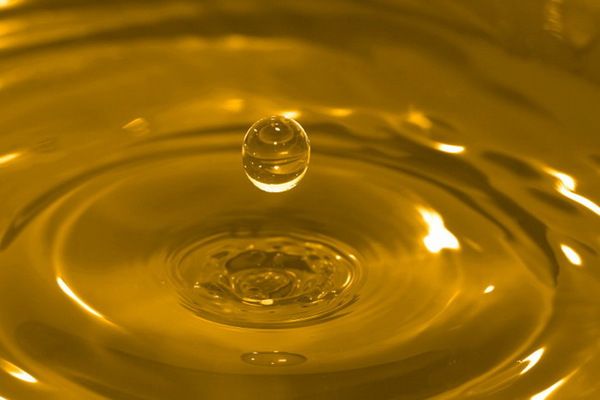AgroPoligon Arnika: Growing Organic Soybean, Chickpea, Lentil
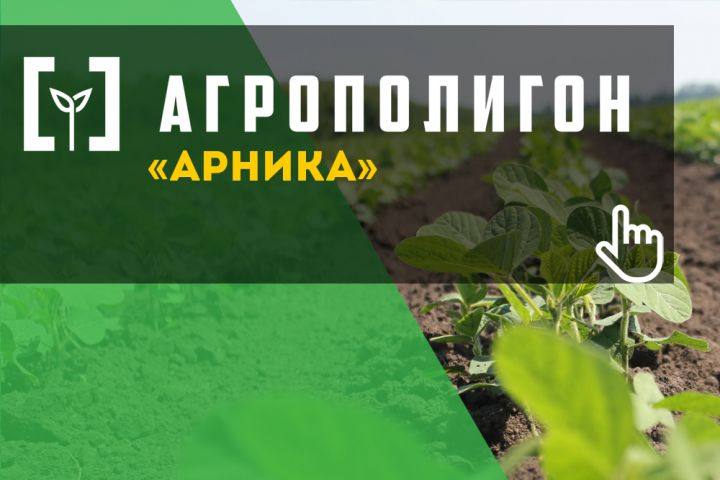
Photo by: Latifundist.com
AgroPoligon has started a new season with Arnika agro-industrial group. Arnika is the largest organic producer in Ukraine located in Poltava region.
This year we will be keeping track of seven cultures grown by the group.
Related story: Arnika leads among Ukrainian organic agrocompanies
50% of the group’s crop rotation is accounted for by legumes: soybean, chickpea, lentil. The second half of the land is allocated for winter wheat, hemp, corn, and flax. The farming of legumes is followed by grains and vice versa. Organic farming strictly forbids growing the same crop over 2 consecutive years, so the crop rotation is carefully monitored.
Upon arrival, our team was welcomed by Sergei Sereda, the chief agronomist of the group, who told us that the sowing campaign was over and there were first results to show us.
Organic lentil
Arnika began its sowing campaign 2018 in the second decade of April with lentil.
They usually allot 1 thousand ha for the crop, but this year it was planted over 700 ha.
In some fields, lentil followed flax or soybean. The AgroPoligon team, however, visited the field where lentil was preceded by winter wheat. 166 ha of the field are covered with lentil of the Linza variety. The crop was sown with the seeding rates of 1.5 mln/ha, at the depth of 5 cm, and with 19 cm of row-spacing. Before sowing, the seeds were inoculated.
The basic cultivation for lentil is plowing which was completed in the fall. In the spring, they blocked moisture by several passes with a flex-tine harrow and performed the pre-sowing treatment. That was followed by pre-emergence harrowing, and double post-emergence harrowing after the plants appeared. Due to all those measures, there was no weed in the field at the time of our visit.
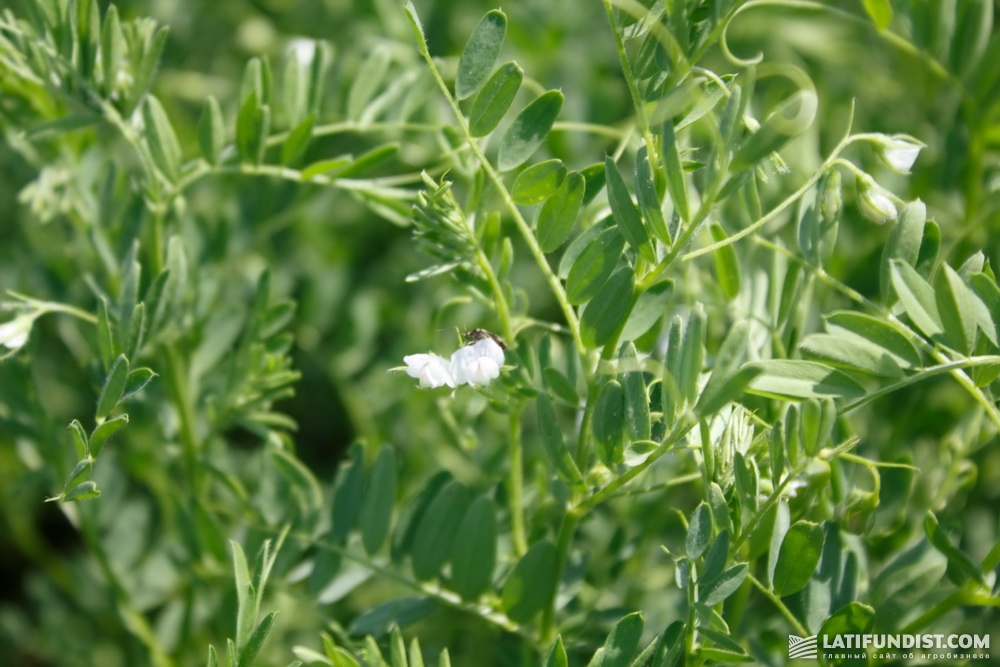
Complying with the principles of organic farming, the company does not use any mineral fertilizers. Instead, the company applies organic fertilizers which come from specially certified organic farms. However, there currently are only a few such farms.
Related story: Live Rating: Organic Agricultural Companies of Ukraine
There are testing areas for every crop the company produces including lentil. The company tests the efficiency of different biopesticides for a year. Based on the tests, they decide whether to use the substance and how it is best to apply it.
"Since we are not quite old hands at organic farming, we are still looking for the best solutions possible. For that reason, we have demo fields to test the efficiency of various biopesticides," told us Sergei Sereda, the chief agronomist of the company.
Apart from experimentation, there are consistent methods of plant protection. Releasing Trichogramma three times per season is one of those.
At the beginning of June, the plant begins to experience lack of moisture, so the rain pouring a couple of hours before our inspection was much welcome for the lentil in early bloom.
Related story: AgroPoligon Arnika

Sergei Sereda assessed the current condition of the crops as very satisfactory, but a more accurate assessment will only be possible closer to harvesting which is to begin in early July. Last year, the lentil yield was 1.6 tons/ha. Given the current condition of the crops, this season’s yield promises to be no lower.
Chickpea — a new but very promising crop
Arnika agricultural holding has been involved in growing chickpea for only two years, but it seems pretty promising. The area for the crop has increased 10 times (from 200 ha to 2000 ha).
Chickpea is usually preceded by corn but it is only temporary since more niche cultures enter the crop rotation plan of the holding. It is expected that in two years corn will no longer be the dominant preceding plant giving way to soybean and other crops. It was the soybean that preceded the chickpea at the field we visited.
The average field sizes of the company are 100 ha, the chickpea we came to inspect covered 47 ha.
The crop of the Zoovit variety was sown on May 8 with the seeding rates of 350 thousand/ha, at the depth of 6 cm, and with 45 cm of row-spacing.
Arnika applies similar methods of soil cultivation for different crops. The basic method is plowing. It was used together with several passes with a flex-tine harrow, pre-emergence weed harrowing and intercultivation.
Before the first shoots appeared, there was a decrease in the crop density due to diseases and over-moistening caused by the rains. The percentage of the damage, however, is insignificant.
Before sowing, the chickpea seeds were inoculated to stimulate better nitrogen absorption.
The prohibition of using chemical pesticides for plant protection makes organic farming more challenging compared with traditional farming. To protect plants from diseases and pests, the company uses fungicides and releases Trichogramma.
"We cooperate with Cherkasybioprotection. The company provides us with Trichogramma. Their employees monitor all the plant protection processes checking the plants for pests, deciding on the time, amounts and types of solutions to apply, etc.," mentioned the chief agronomist.
This year the Institute of Organic Agriculture, which is part of Arnika agro-industrial group, has created a Plant Protection department. The plant pathologists and entomologists of the department run tests in the fields of the company and in the Institute labs to establish the most effective ways of applying biopesticides and entomophages under varied conditions. This will help the company design their own bank of solutions for diseases and pests.
Chickpea is a drought-resistant crop. Despite the dry start of June, the plant was just fine.
By the time of our visit, the plant was a week away from entering an early bloom phase. The condition of the crop was assessed as good. Given the height of the stems, there will be no machinery involved in plant care before the harvesting.
In the first year of chickpea cultivation, the yield was 2.3 tons/ha in bunker weight. Taking into account better weather conditions, the company expects no lower yields this year.
Late sown soybean
This year, Arnika sowed soybean a month later than usual on May 24. It was a good decision since it protected the plant from dehydration. The late seedlings have already outperformed those planted a month earlier. By the time of our visit, it had reached the first trifoliate stage.
In 2017, the field was used for corn, today it is cultivated by the soybean variety of the company’s own selection — Khorol. The crop was planted at the field of 139 ha with the seeding rate of 700 thousand/ha, with 700 thousand/ha of density, at the depth of 5 cm, and with 45 cm of row-spacing.
Before sowing, the soybean seeds were inoculated to ensure better nitrogen absorption.
Last year, the yield of organic soybeans amounted to 1.8 tons/ha. Remarkably, traditional farming provided worse results. This year, the company utterly abandoned traditional farming and it will be impossible to compare the results.
"The Institute of Organic Farming has been working on an organic technique which allows us maintaining enough moisture under dry weather conditions by obtaining it from the atmosphere. Unlike traditional farming techniques, it makes the droughts less stressful for the plants," Sergei Sereda shared with us.
The area for organic soybean was plowed in the fall. In the spring, there followed a flex-tine harrowing and a pre-sowing cultivation. After the sowing, the company performed pre-emergence and post-emergence harrowing which means that weeds are kept in check. There will also be a planned inter-row cultivation in the near future.
To protect the seedlings, on May 20, Trichogramma was released in all fields and adjacent forest belts, the second release is planned on June 20, and the third one will depend on the percentage of pest infestation.
It is for the first time in the history of AgroPoligon that we simultaneously observe the growth of so many crops by one company. There is always a first, though. We will get back soon with details on growing organic wheat and corn and more information on the secrets of legumes growing, so stay with us.
Anastasia Avramchuk, Latifundist.com


